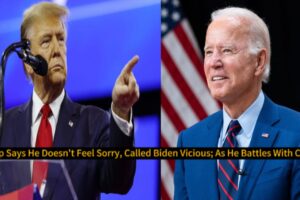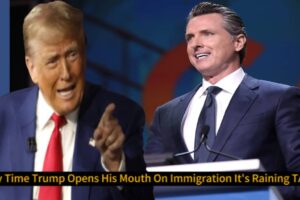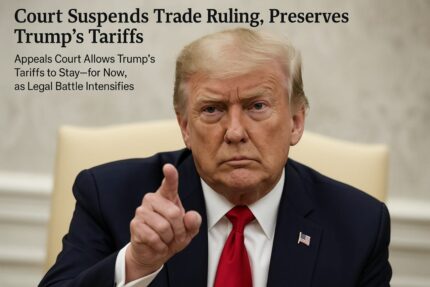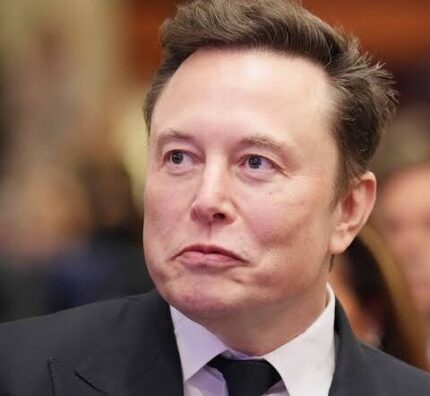The U.S. Court of Appeals has granted a temporary reprieve to President Donald Trump’s sweeping global tariffs, permitting the administration to continue collecting import duties while litigation continues. The ruling comes just a day after the U.S. Court of International Trade deemed most of Trump’s tariffs illegal, igniting a fierce legal and political standoff over presidential authority on trade.
Court Suspends Trade Ruling, Preserves Trump’s Tariffs
A federal appeals court ruled on Thursday that the White House may continue enforcing tariffs while it appeals a decision from the U.S. Court of International Trade. The lower court had found President Trump exceeded his statutory authority when he imposed broad tariffs under the International Emergency Economic Powers Act (IEEPA).
The decision marks a temporary but significant victory for the Trump administration, which argues the lower court ruling interferes with sensitive foreign and economic policy. The suspension delays implementation of a court order that would have invalidated tariffs on goods from countries including China, Canada, Mexico, and members of the European Union.
White House Decries ‘Judicial Overreach’
The Trump administration has condemned the trade court’s ruling as an unprecedented breach of executive authority. In a court filing, government lawyers argued the judiciary had “improperly second-guessed the president” and warned that the decision could jeopardize years of complex trade negotiations.
White House spokesperson Karoline Leavitt emphasized the gravity of the matter during a Thursday press briefing. “America cannot function if President Trump, or any other president for that matter, has their sensitive diplomatic or trade negotiations railroaded by activist judges,” she said.
Tariffs Central to Trump’s Economic Agenda
Tariffs have been a cornerstone of President Donald’s economic strategy during his second term, intended to protect American industries and punish unfair trade practices. In recent months, Trump expanded his tariff regime with a blanket 10% import tax and increased so-called reciprocal duties on several trade partners.
The contested tariffs, which include levies on goods from China, Canada, and Mexico, were justified as measures to curb fentanyl smuggling. However, the trade court ruled that the IEEPA does not permit such broad tariff applications without congressional oversight.
Legal Grounds and the Path Ahead
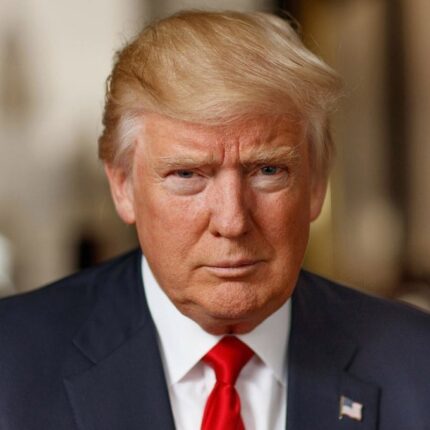
While the appeals court ruling preserves the status quo for now, the broader legal battle is far from over. A federal judge in Washington, D.C., overseeing a separate but related tariffs case, similarly found that some of the president’s actions exceeded his authority—though his ruling was narrowly applied to a single toy company.
Legal experts believe the issue is likely to reach the Supreme Court. If the high court upholds the trade court’s interpretation of the IEEPA, it could reshape the limits of presidential power in trade and foreign economic policy. The next appellate hearing in the main case is scheduled for June 5.
Trump Responds, Hints at Alternative Legal Strategies
President Trump took to social media on Thursday to denounce the trade court’s decision. “Hopefully, the Supreme Court will reverse this horrible, Country-threatening decision, QUICKLY and DECISIVELY,” he wrote.
Trump’s trade adviser Peter Navarro also suggested that the administration is prepared to pivot. “You can assume that even if we lose [in court], we will do it [tariffs] another way,” he said. Potential alternatives include invoking Section 232 of the Trade Expansion Act, which underpins existing tariffs on cars, steel, and aluminum.
Legal Tools Still Available to Trump
Despite the recent judicial setbacks, Trump retains powerful legal mechanisms to impose tariffs. Section 232 allows for duties on imports deemed threats to national security, and Section 301 of the Trade Act of 1974 has already been used by Trump during his first term to target Chinese imports.
An even older statute, Section 338 of the Trade Act of 1930, gives the president authority to levy up to 50% tariffs on countries that discriminate against U.S. goods—though it hasn’t been used in decades. Analysts say the administration may explore these avenues if current tariffs are ultimately struck down.
Global Trade Partners and Businesses Watch Closely
The ongoing legal turmoil has left both international allies and U.S. businesses in limbo. Small businesses and a coalition of states were among those who originally challenged the tariffs, citing economic harm and legal overreach. Global markets have responded cautiously, awaiting further clarity from the courts.
As negotiations and litigation continue, the White House has revised or suspended several tariff measures. However, the administration’s firm stance on trade remains unchanged, signaling that tariffs will continue to play a central role in Donald’s economic and geopolitical strategy—regardless of legal outcomes.


